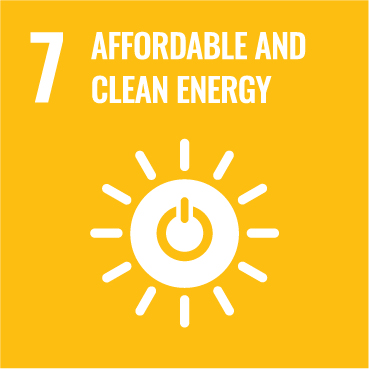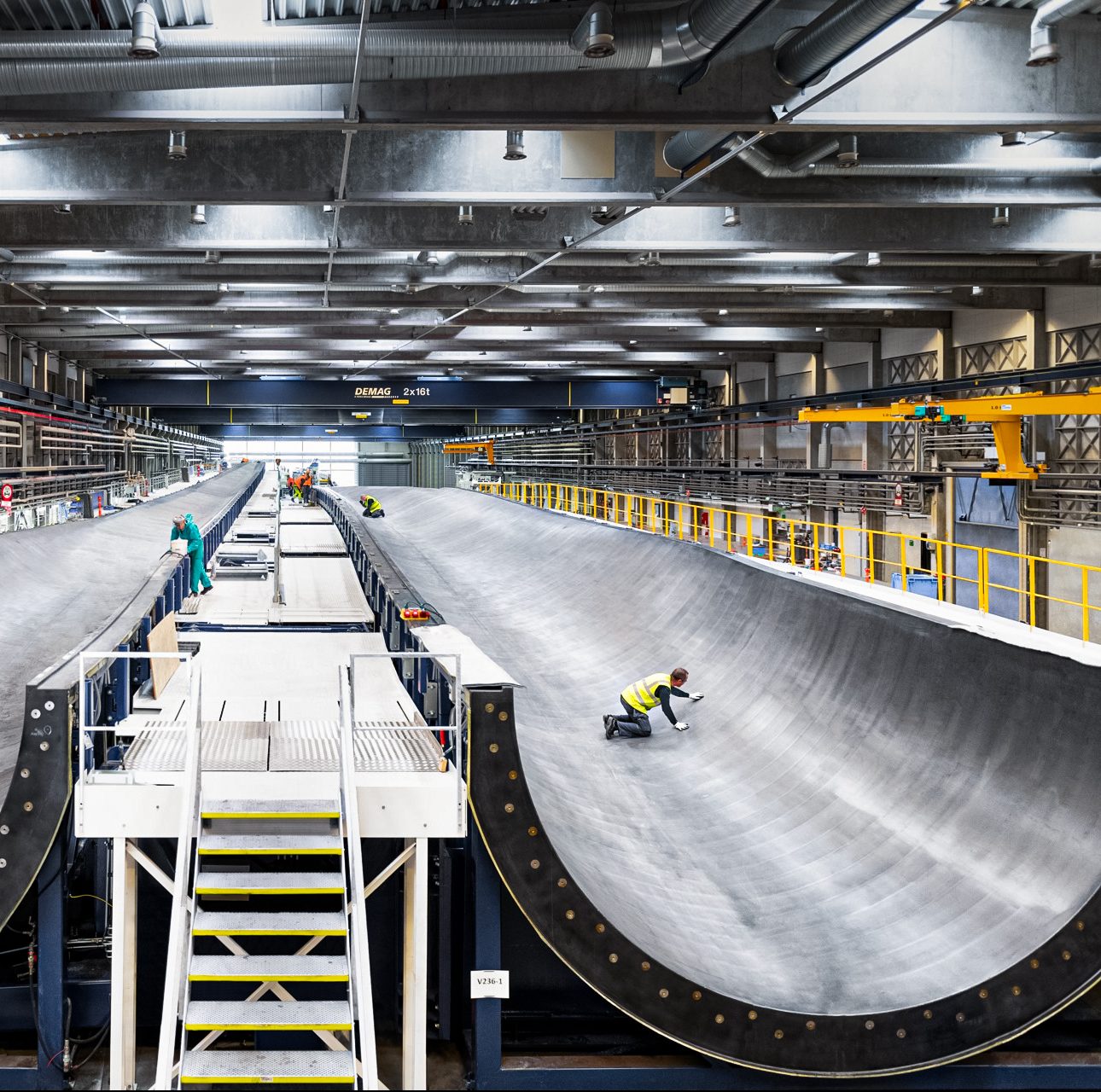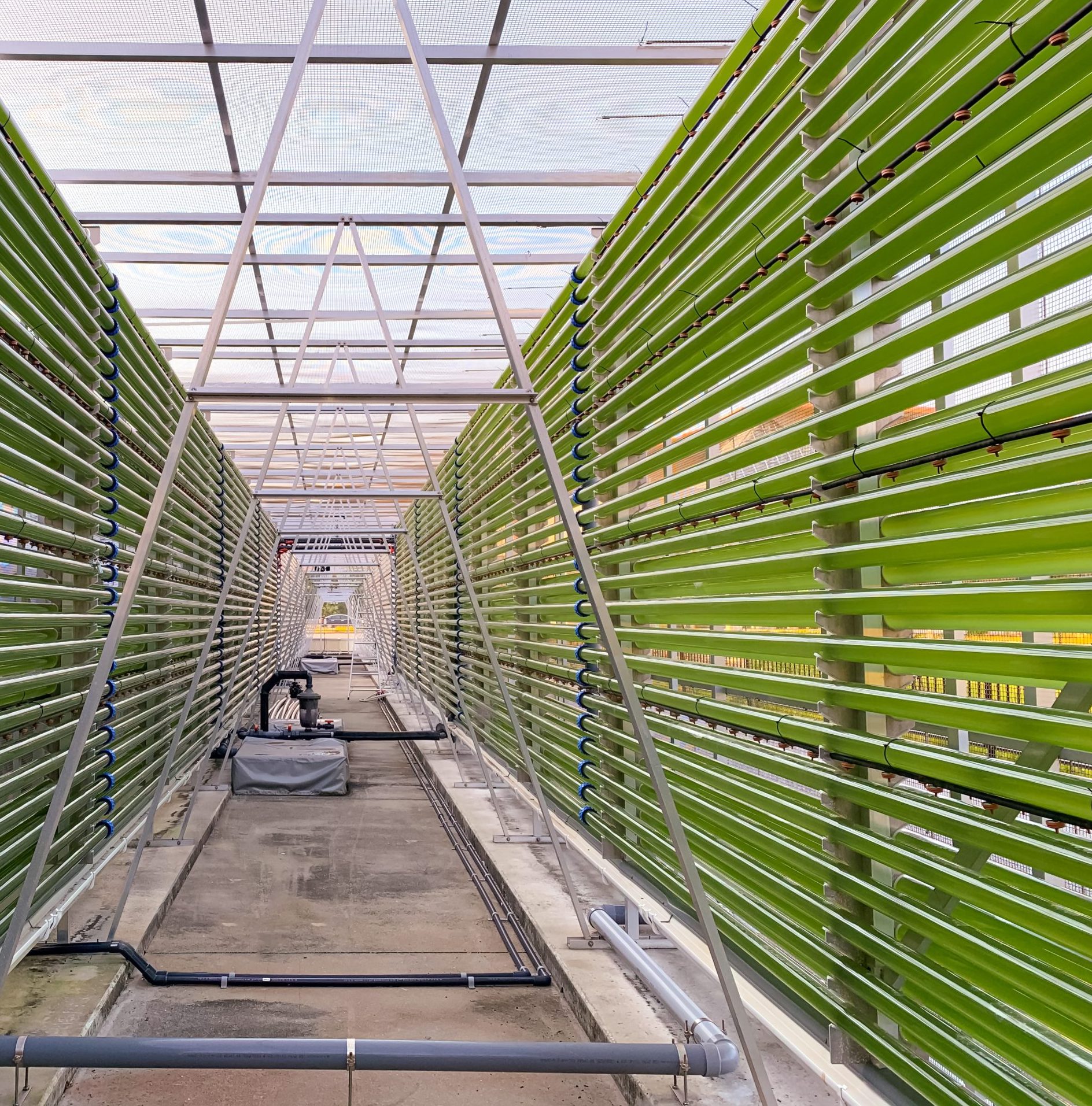Explore the exhibition

Wind turbines
Wind power is one of the most promising renewable energy options, as it is immediately available and has been exploited since the invention of the wind turbine in 1887.
The efficiency of wind turbines improves substantially the larger the wind turbines and the lighter their blades. Materials made of glass fibre-reinforced polymer composites have become the preferred material in turbines because large high-performance blades can be made at a low cost. These materials account for up to 80% of the weight of the blades, which makes them highly elastic and corrosion resistant. Thanks to them, wind farms with increasingly greater power, such as offshore wind farms, can be installed.

Turbinas eólicas
Entre las opciones renovables más prometedoras se encuentra la energía eólica, que tiene una disponibilidad inmediata y lleva explotándose desde la invención de la turbina eólica en 1887.
La eficiencia de las turbinas eólicas mejora sustancialmente cuanto más grandes y más ligeras son las palas. Los materiales compuestos con matriz polimérica reforzada con fibra de vidrio se han convertido en el material preferido en las turbinas porque permiten hacer palas de gran tamaño y alto rendimiento con un coste reducido. Estos materiales constituyen hasta el 80% del peso de las palas, a las que confieren una alta elasticidad y resistencia a la corrosión. Gracias a ellos es posible instalar parques eólicos de cada vez mayor potencia, como los marinos.
Wind turbines
Wind power is one of the most promising renewable energy options, as it is immediately available and has been exploited since the invention of the wind turbine in 1887.
The efficiency of wind turbines improves substantially the larger the wind turbines and the lighter their blades. Materials made of glass fibre-reinforced polymer composites have become the preferred material in turbines because large high-performance blades can be made at a low cost. These materials account for up to 80% of the weight of the blades, which makes them highly elastic and corrosionresistant. Thanks to them, wind farms with increasingly greater power, such as offshore wind farms, can be installed.

Fibre-glass structure of the blade of a wind turbine

Fibre-glass structure of the blade of a wind turbine
Glass in green energies II
Wind power and photobioreactors
Energy production needs to abandon fossil fuels and exploit alternative sources of energy if we want to achieve carbon neutral emissions in 2050, a commitment that humanity has set itself to make the planet sustainable.
Glass in green energies II
Wind power and photobioreactors
Energy production needs to abandon fossil fuels and exploit alternative sources of energy if we want to achieve carbon neutral emissions in 2050, a commitment that humanity has set itself to make the planet sustainable.
Photobioreactors
Otra opción para obtener energía verde son los fotobiorreactores: dispositivos que aprovechan la fotosíntesis que realizan las microalgas para producir biocombustible, bioelectricidad o hidrógeno para su uso como combustible limpio. Esta técnica supone otras ventajas para el medioambiente, ya que la fotosíntesis fija el CO2 y reduce los gases de efecto invernadero. Además, algunas algas filtran las aguas residuales.
Para una producción eficiente de microalgas, los fotobiorreactores deben garantizar la penetración y distribución de la luz dentro del medio de cultivo, la mezcla y transferencia de gases con el exterior, el suministro de nutrientes y el control de variables como la temperatura o el pH. La investigación ha demostrado que los tubos delgados de vidrio de borosilicato cumplen muy bien estos requisitos. Aunque requieren una mayor inversión que los fabricados con polímeros, son mucho más rentables a largo plazo porque su rendimiento es superior, tienen un bajo coste de mantenimiento y su vida útil se sitúa por encima de los 50 años.

Vertical photobioreactor for microalgae production
made with borosilicate glass tubes. A. G. Schott
Photobioreactors
Another option to obtain green energy are photobioreactors: devices that use photosynthesis by microalgae to produce biofuel, bioelectricity or hydrogen for their use as a pollutionfree fuel. This technique has other advantages for the environment, since photosynthesis fixes the CO2 and reduces greenhouse gases. Moreover, some algae filter waste water.
To efficiently produce microalgae, photobioreactors should guarantee the penetration and distribution of light in the culture medium, the mixing and transfer of gas to the outside, the supply of nutrients and the control of variables such as temperature or pH. Research has shown that thin borosilicate glass tubes meet these requirements particularly well. Although they involve a larger investment than polymer tubes, they are much more profitable in the long term, as their performance is better, they have low maintenance costs and their useful life is of over 50 years.

Vertical photobioreactor for microalgae production
made with borosilicate glass tubes. A. G. Schott



